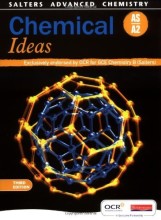Colour by Design - Chemistry of colour
17 important questions on Colour by Design - Chemistry of colour
Why are transition metal ions coloured?
Electrons in their d orbitals can be excited. When the transition metal ions is surrounded by ligands, the d orbitals are split into two different energy levels. Electrons in the lower of these two new energy levels can be excited to the higher level and absorb light in the visible region. The complementary colour of the light absorbed is transmitted. The excitation energy required corresponds to the absorption of light.
What factors affect the excitation energy, and therefore the colour of the complex?
- the type of ligand
- the shape of the complex - octahedral or tetrahedral
- the coordination number of the complex
- the charge on the central transition metal ion
What can be said if the d sub shell is empty or completely full in a transition metal ion?
The transition metal ion is colourless.
- Higher grades + faster learning
- Never study anything twice
- 100% sure, 100% understanding
Why is the complex ion [Ni(H2O)6]2+ green?
It absorbs light in the red/ violet region of the visible spectrum; when the nickel ion is surrounded by ligands, the 3d sub shell is split in energy; as light is absorbed, electrons are excited from the lower to higher level, the gap in energy between the two levels is related to the frequency of the absorbed light by the equation: *delta*E =hv
When the ligand edta4- is added to [Ni(H2O)6]2+, a blue complex ion forms. Explain why the new complex has a different colour.
Changing the ligand changes the energy gap (excitation energy) between the two levels.
What effect does extending the delocalised system, in an organic molecule, have on the absorption frequency?
The bigger the delocalised system, the smaller the energy gap between ground and excited states, the lower the frequency.
Explain why all scandium (III) compounds are white.
Sc3+ has no 3d electrons and so cannot absorb a frequency of visible light.
How can the colour of an organic molecule be modified?
Functional groups such as -OH, -NH2 or -NR2 attached to the chromophore modifies the structure, allowing different wavelengths of light to be absorbed.
Why is cotton dyed easily?
It is cellulose (has lots of -OH bonds) and so would hydrogen bond with dyes.
What are the main bonds between the dye molecules and the polyester fibres?
Instantaneous dipoles induced dipoles.
What causes the splitting of orbitals in a sub-shell?
When the transition metal ion is surrounded by ligands.
Explain how different elements in a pigment each produce a unique atomic emission spectrum.
In an emission spectrum, electrons are falling from an excited state to ground state. Electrons can only possess different quantities of energy in different pigments so the frequencies of lines produced are unique to the pigment as only distinct energy changes are possible. *delta H*E = hv
Explain how the formula PbO2 fits into a pattern in the periodic table.
Lead is in group 4 and all other group 4 elements tend to have a 1:2 ratio with oxygen.
Give the outer electron subshells for Pb and Pb2+.
Pb: 6s2 6p2
Pb2+: 6s2
How would you illustrate that a substance is basic?
React it with acid (HCl) - it will produce a salt and water
Does the basic nature of PbO fit with the trend for oxides across a period?
No - oxides on the RHS of the periodic table are acidic (Pb is on the right hand side but is basic)
Why does the colour of a transition metal vary with the nature of the ligand?
Different ligands produce a different amount of energy in separating the d-orbitals. This effects the size of the energy gap when the electrons fall back down to ground state.
The question on the page originate from the summary of the following study material:
- A unique study and practice tool
- Never study anything twice again
- Get the grades you hope for
- 100% sure, 100% understanding
































